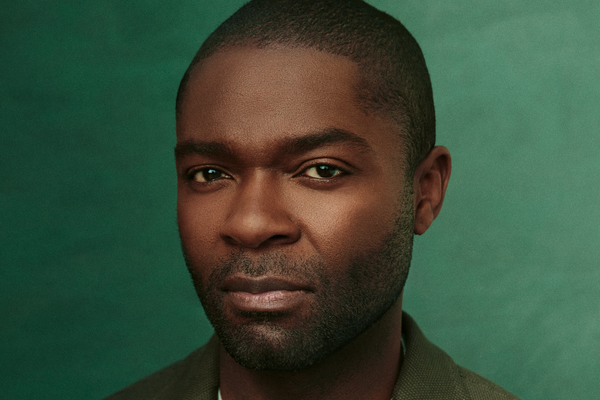
Easy to underestimate John Galsworthy, winner of the 1932 Nobel prize in literature, whose once fashionable plays are now rarely seen but whose most famous sequence of novels has often been dramatised. I went into The Forsyte Saga anticipating fabric and furrowed brows. Shaun McKenna and Lin Coghlan’s splendid new version is much more disruptive.
Centrally there is The Rape. That is the event everyone remembers from whichever televised version (1967 or 2002) they saw. It is the moment when Soames Forsyte – the “man of property”, rigid with respectability – lays claim to what he regards as a covetable possession: his wife, Irene, who moves through the saga like Helen of Troy. In the language of the period, “he forced her”. A man who seemed merely chilly becomes hateful; the acquisitiveness natural to a family defined by “money and secrets” is proved to be lethal; conventional society is exposed. Yet in a twist that gives the novel another vein of feeling, Soames is eventually shown to have a heart.
Here feminism is emphasised, as the action is introduced by Soames’s spirited, minxy daughter, Fleur (a nimble Flora Spencer-Longhurst), who looks back over her family history, from 1886 to 1927. The idea of producing this bulky, deliberate chronicle in one of the most intimate and very 21st-century of London theatres is dashingly counterintuitive, and director Josh Roche and designer Anna Yates exhilaratingly work further against expectation. This story so stuffed with stuff is set on an almost bare stage: a few chairs in front of a full-length curtain behind which is a brick wall; puffs of fog for a catastrophic evening in the capital. Leaps of place and era are conjured intangibly, by shifts in Alex Musgrave’s lighting, and by Max Pappenheim’s score and sound design, which moves between the subdued and the jazzily zinging.
The atmosphere is charged but nothing is skimped. The two-part play unrolls, ample and spacious. Each part can be seen on separate days (both last two-and-a-half hours) but it is satisfying to see them in one gulp, watching the generations, well, generate. In an elegant opening to the second half, old and new versions of the same characters meet silently, circling each other in a quizzical dance.
Joseph Millson’s Soames is a saturnine marvel – damped-down emotion glimmering through his stiffness. Multi-role playing by the cast of nine is exceptionally adroit, with Jamie Wilkes especially striking as the sweet black sheep of the family and a gauche (“I’m frightfully gone on Fleur”) suitor.
Yates’s beautifully detailed costumes wire the action into character and epoch. The ties alone tell a story: Soames’s grey silk is thin and tight around his upright collar; the unconventional architect Bosinney wears his stubbier version loosely knotted. Fiona Hampton’s beautifully contemplative Irene begins in a Victorian gown like a toffee paper; later she is smooth in grey. These rare touches of colour and texture light up the spareness of a first-rate production that ingeniously embodies Galsworthy’s stand against materialism.
Suddenly Othello seems to me to be a play – not exclusively but centrally – about women being done down, as well as done in. Harriet Walter’s new book She Speaks! reminded me of the extraordinary lost possibilities of Desdemona, of how rebellious she must have been to run off with Othello, and how she diminishes in the course of the action.
In Tim Carroll’s handsome but flat RSC production, Juliet Rylance gives her a steady intelligence; not the wildness of revolt but not the accustomed wispiness of someone naturally submissive. The scenes with Anastasia Hille’s Emilia, who has some of Shakespeare’s most transfixing lines (men eat us up then “belch us”, she exclaims), are the best in the evening. Hille is the show’s highlight: at once intricate and easy, she makes every line glimmer. Together the women exude a complicity that is absent elsewhere.
Crucially, John Douglas Thompson’s Othello and Will Keen’s Iago seem to come from different planets. Emotionally and physically: even when most closely engaged with each other, they stand at opposite sides of the stage. Thompson is oratorical, free with commanding gestures: he thunders in argument, stretches his arms wide, even beats his chest; he might be posing for a commemorative medallion. He rarely looks at someone he is addressing; his gaze goes upwards and outwards, to the audience and to heaven.
This statuesque sonority echoes aspects of the staging, which suggest grandeur and elevation without quite justifying them. Judith Bowden’s design features a wall of massive golden blocks and a puzzling lofty canopy, curtained as if by rods of rain, which might be chain mail; James Oxley’s music draws on the magnificent rumble of an a cappella male chorus, bringing eastern Orthodox tones that float free of the action.
Meanwhile, Keen’s Iago is infinitely inflected. He is an extraordinary, often internal actor who can make a tic in his cheek look like a convulsion, but detail here overwhelms dynamic: his voice is often muffled; his naturalism begins to look like willed display. He and Othello are never intertwined. The strength of the tragedy evaporates. Though not among the women.
Star ratings (out of five)
The Forsyte Saga ★★★★
Othello ★★★
The Forsyte Saga, Parts 1 and 2 is at the Park theatre, London N4, until 7 December
Othello is at the Royal Shakespeare theatre, Stratford-upon-Avon, until 23 November










